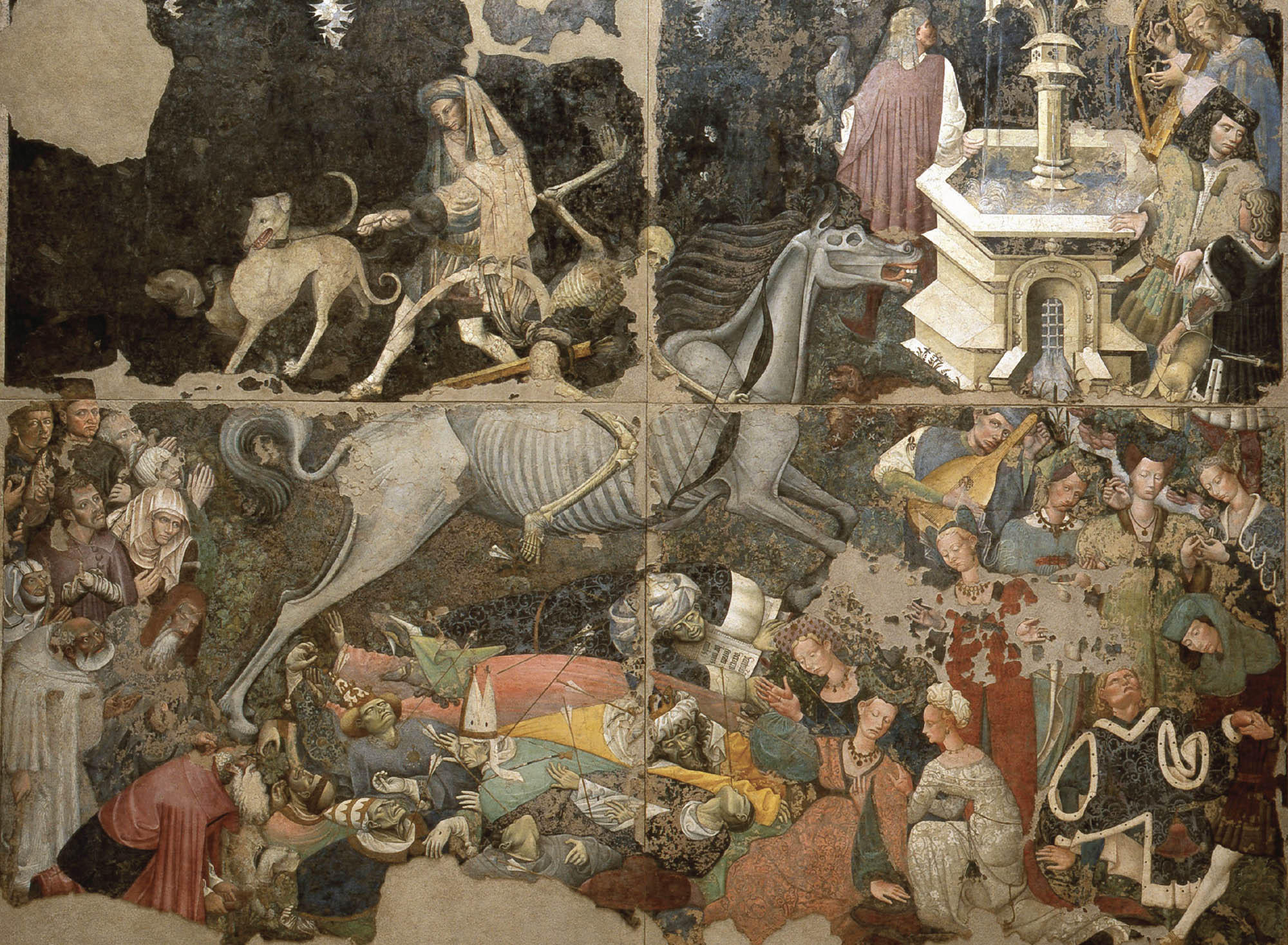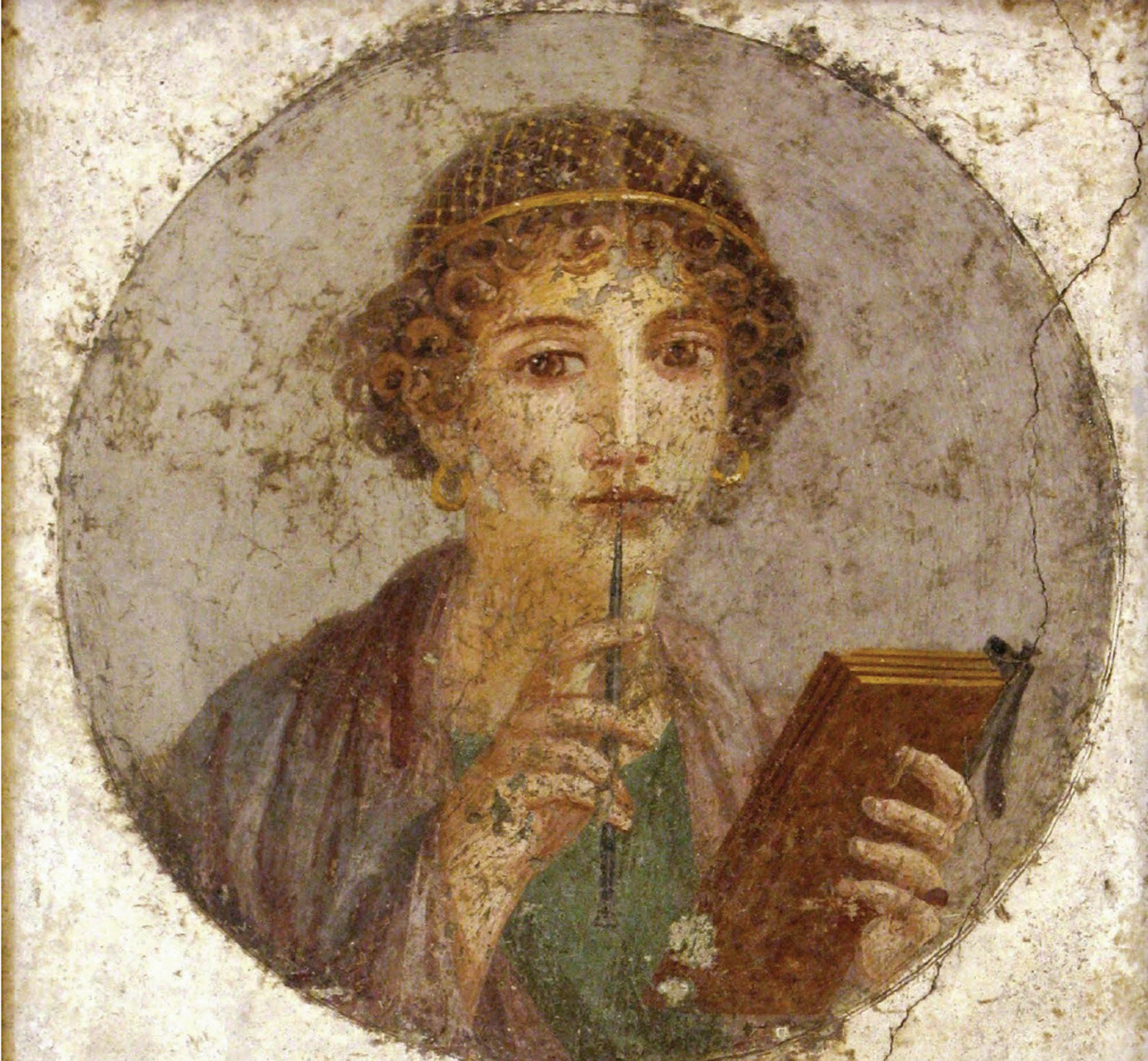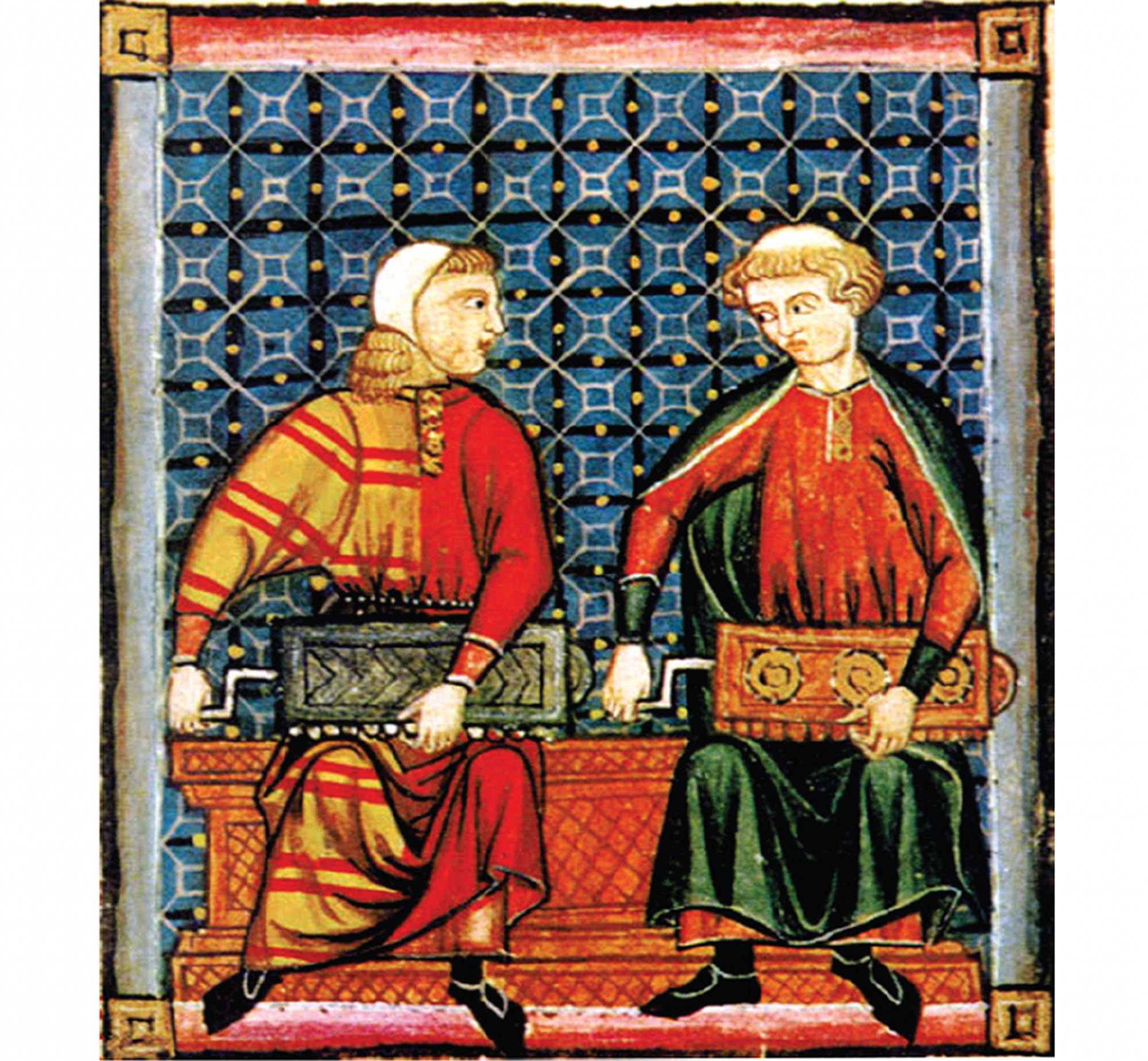
The debate
Look at the pictures below. Which one is the oldest?


Many of you probably picked the Cantigas de Santa Maria. The oldest, though, is “Woman with wax tablets and stylus.” It is about 2,000 years old. It comes from the Roman town of Pompeii. The Cantigas de Santa Maria was painted 1,200 years later. The top picture is the “Last Supper.” Leonardo da Vinci was the artist. He painted it in the late 1400s CE.
What do these paintings tell us about the Middle Ages? Were they really the “Dark Ages?” I only showed you three paintings, of course. I might have even picked them to trick you into thinking the Middle Ages were behind the times. But historians do this all the time. They choose evidence to support their position. They may ignore evidence that doesn’t.
So were the Dark Ages so dark? Historians have debated this question for 500 years. Let’s look at it from three perspectives: the Renaissance, the Enlightenment, and the modern period.
The Renaissance and Enlightenment view of the Middle Ages
The Renaissance came after the Middle Ages. Renaissance means “rebirth” in French. European learning and art thrived during this period. Some Renaissance scholars, though, said the Middle Ages were backward. They thought art and music were not as good. Making fun of older generations is pretty common. You may even laugh at the music and fashion that your teachers like.
Petrarch was a writer in the 1300s. He was a humanist. He wrote about Greece and Rome. He said those ancient cultures were better than Europe in the Middle Ages. He believed society was moving backward. He described Europe after the fall of Rome as “dark.” But he believed there were brighter days ahead. Soon, he thought, Europe would regain the greatness of Greece and Rome.
Many later scholars shared Petrarch’s views. One of them was Edward Gibbon. He was an Enlightenment historian. He wrote The History of the Decline and Fall of the Roman Empire. It was published in the late 1700s. In his book, Gibbon said Christianity caused the fall of Rome. He said that while trying to eliminate “pagan” beliefs in Rome, Catholics also snuffed out Rome’s greatness.
Modern views of the Middle Ages
Historians held onto this idea of the Dark Ages. Some scholars, though, began to question it. They thought the term was inaccurate. They believed the period was not actually “dark.”
Others argue the term is misused. Alban Gautier is a professor of Medieval History. He says the term Dark Ages shouldn’t have a negative meaning. Instead, it describes a time when there weren’t many written records. In other words, the Dark Ages were not necessarily bad. They were dark because we don’t know much about them.
The debate continues
So why has this debate continued? Scholars of every period have different motives. Renaissance scholars wanted to prove their time was better than the Middle Ages. They wanted to link their achievements to the greatness of ancient Greece and Rome. Enlightenment scholars had a different purpose. They celebrated reason and science. Some Enlightenment philosophers were critical of organized religion. The Dark Ages to them was a time of superstition. They thought ancient Greece and Rome were better.
Many later scholars agreed with Petrarch and Gibbon. They wanted to honor the Romans and Greeks. They presented the “Dark Ages” as backward and violent. However, they ignored the developments of that period. Today, the debate continues. More scholars now say that history can’t easily be divided into “ages.”
What do you think? Was there ever a “dark age” of medieval history? Or do you think the Middle Ages were simply a time of ongoing change in Europe?
“The Dark Ages Debate” by OER Project, available at https://www.oerproject.com/OER-Materials/OER-Media/HTML-Articles/Origins/Unit5/The-Dark-Ages-Debate/610L, is licensed under a Creative Commons Attribution 4.0 International License.
1 The Middle Ages was a period in Europe. It started with the fall of Rome in the fifth century. It ended with the start of the Renaissance in the fourteenth and fifteenth centuries.
2 Renaissance humanism was a movement that focused on studying classical authors to improve humanity. Some rejected the focus on Christianity and religion during the medieval period. Others incorporated aspects of Christianity into their classical studies.
3 You’ll learn more about the Enlightenment later. For now, just know that it was an intellectual movement from the seventeenth to the nineteenth century. It emerged from the ideas of the Renaissance.



